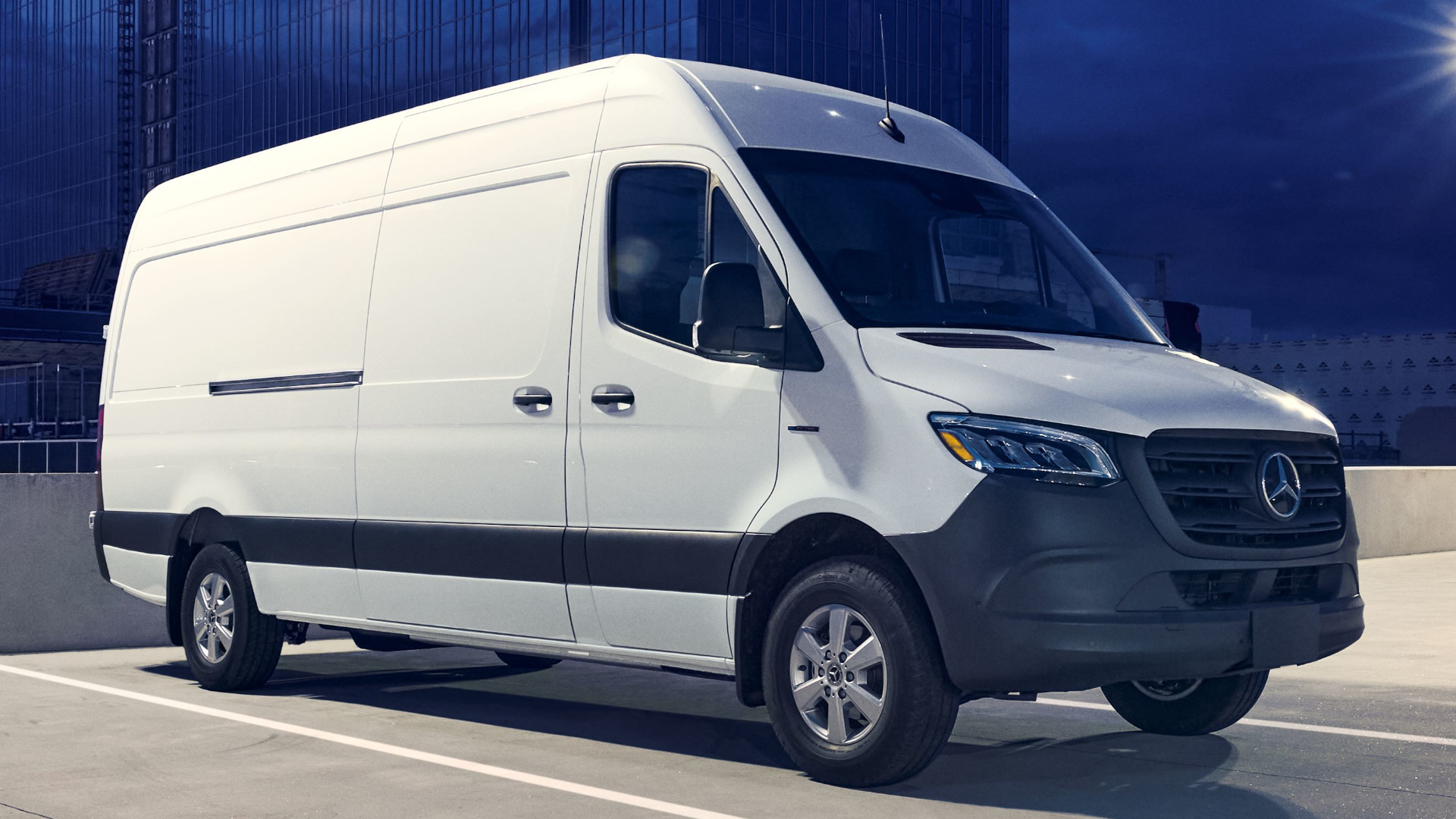

Electric vehicles are beginning to encroach on every market segment, from commuter cars to serious work vehicles. In the latter vein, Mercedes-Benz has finally introduced the eSprinter that’s been available overseas for sometime to North American customers for the 2024 model year.
The eSprinter carries with it the trusted and recognized design of the Mercedes-Benz Sprinter, only now it’s powered by a battery-electric drive system. Priced starting at $74,181 including a $2,295 destination charge, the eSprinter is exclusively equipped with a 113 kWh battery using lithium iron phosphate (LFP) technology for North American customers. The LFP choice avoids the sourcing concerns around cobalt or nickel, and offers better longevity befitting a commercial vehicle.
One curious point is the vehicle’s range, which Mercedes claims as a relatively humble 249 miles. That might appear substantial for daily runs, but the figure may not meet the needs of businesses with longer routes or those reluctant to deal with frequent charging. Notably, that estimate is also based on Europe’s rather generous WLTP testing cycle, rather than the EPA’s, which tends to report more modest longevity on a charge. Being an electric vehicle with regenerative braking, the eSprinter would perhaps be best suited to start-stop city routes rather than longer rural deliveries on the open road.

Buyers can choose between two power levels of 134 hp or 201 hp from the single electric motor, both promising a torque of up to 295 lb.-ft. Mercedes specifically notes that the motor will deliver this torque for “at least 30 seconds,” suggesting the motor may be thermally limited beyond that point. The higher-output motor is a higher cost option, starting at $77,611 versus $74,181 for the lower-powered version.
As standard, the eSprinter offers AC charging at 9.6 kW, and DC fast charging at up to 50 kW. Charging at 115 kW is an optional upgrade that can charge the battery from 10% to 80% in slightly over 40 minutes. The latter would be a sure-fire hit with businesses eager to keep a fleet on the road as much as possible.
The eSprinter offers three different drive programs and five “recuperation stages”, aiming to optimize electrical consumption and range. The vehicle can even auto-adjust its energy recovery rate according to the traffic situation through a built-in radar sensor. In the ECO Assist drive mode, the eSprinter actually advises the driver when to lift off the throttle, while automatically deciding which level of regenerative braking to use.




As for payload, the eSprinter has a load capacity of 488 cubic feet and a permissible gross weight of 4.25 tons. Only the 170-inch wheelbase version will be available in North America at launch. Mercedes also offers its eXpertUpfitter solutions which allow the van to be customized for deliveries or as a mobile workshop, with a range of shelving, flooring, and storage solutions.
Customers are slowly becoming more accustomed to EVs, but Mercedes is going the extra mile to try and assuage any fears that fleet buyers might have. To address potential concerns about switching to electric drive, Mercedes-Benz is including a eight-year, 100,000-mile Battery Certificate and a maintenance package that encompasses the first four years of service in the purchase price. Even if that’s costly in the short term, it could go a long way to offering buyers on the fence that crucial peace of mind.
In many ways, Mercedes has taken a well-reasoned and conservative approach with the eSprinter. Rather than building a flashy, swoopy, all-new EV, it’s instead attempted to ease the transition with a familiar-looking van with a familiar name. It’s the same strategy that Ford took with the F-150 Lightning—not to mention the E-Transit—and one that’s bore fruit in recent years. So long as the high cost of entry doesn’t dissuade business customers interested in making the switch, anyway.
Got a tip? Let the author know: lewin@thedrive.com